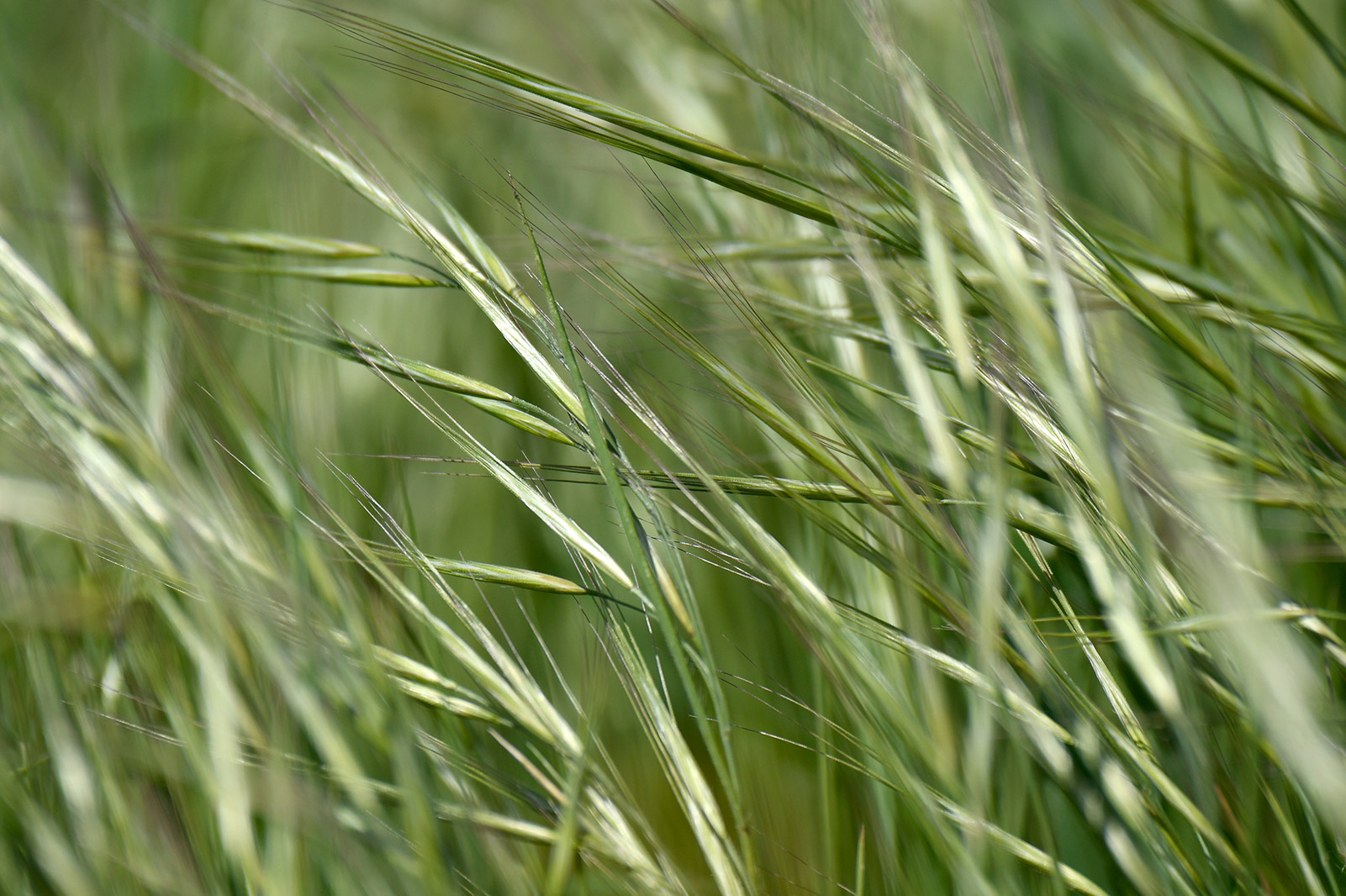The Amazing Ability of Pasture Grass to Sequester Carbon
Century-Old Chamberlin Ranch Turns to New Techniques That Improve Rangeland and So Much More

A buzz has been generating in California agriculture circles over the possibilities of carbon ranching. It’s not about producing carbon, as it might sound, but about putting more carbon back into the ground, naturally, through grasses. The theory goes like this: Native grasses send roots as deep as six feet underground, breathing in carbon dioxide as they breathe out oxygen. At a number of test acres across California, including at the Ted Chamberlin Ranch near Los Olivos, adding a thin layer of compost has created more topsoil, which feeds the microbes below ground, which enrich the grasses, which draw more carbon dioxide out of the atmosphere and hold it in their roots deep in the soil. Add cattle to the mix, and voilà! Carbon ranching.
What really got people excited about this simple layer of compost is that it sequesters carbon now. “We don’t have to wait for Elon Musk to geo-engineer something from space,” laughed Sigrid Wright, who heads Santa Barbara’s Community Environmental Council (CEC). Wright and an alphabet soup of agencies have been working together with the Chamberlin Ranch on a 60-acre demonstration project through California’s Healthy Soils Initiative.
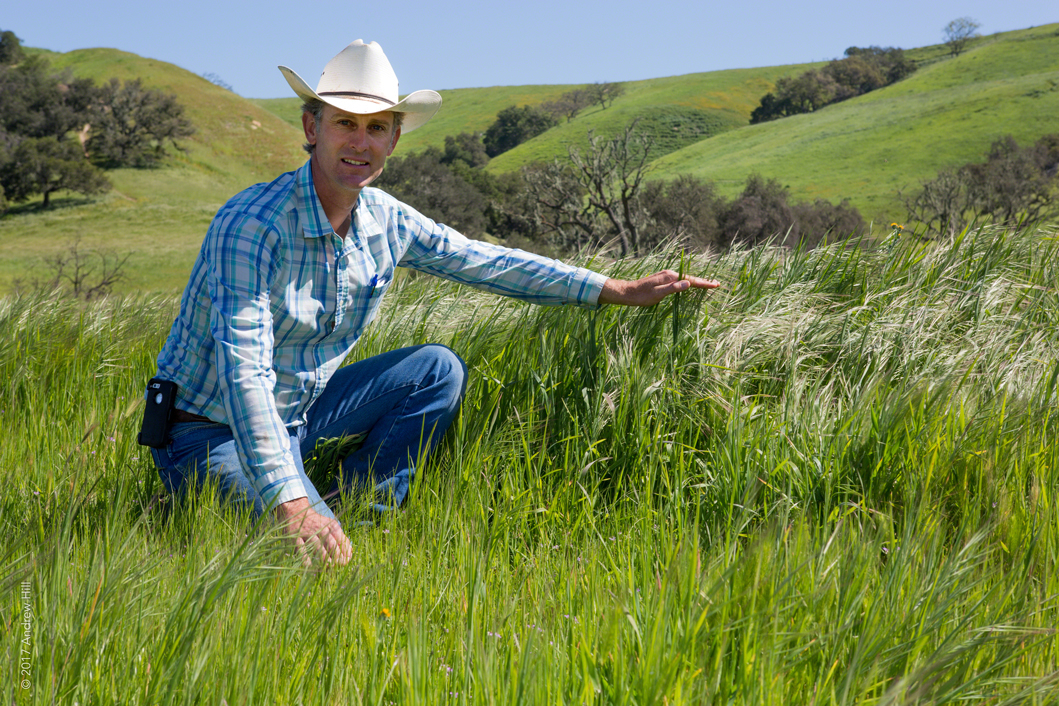
For Russell Chamberlin — who wears a white Stetson as did his father, Willy Chamberlin, the popular, no-nonsense county supervisor who died in 2015 — it’s a way to improve the pasturelands, which he manages with his cousin Mary Heyden. “When I came back to the ranch in 2008, after going to college and working in Northern California, I was interested in how to improve the rangeland, in forage production,” he said. “Work in Marin on compost on rangeland had generated a lot of excitement and attention. So as I learned more about grazing, I got interested in making the ranch a learning site for these practices.”
Heyden — whose mother, Helen, was born on the ranch — grew up in Chicago but spent long summers on the ranch. And she loved it. Now, with the assent of their extended family, the two have become the third generation of Chamberlin land managers, which now includes exploring how carbon ranching would work on their cattle ranch’s 8,000 acres.
“We completed our Carbon Farm Plan in January 2016,” Chamberlin said, “with a great network and team of people from the CEC, the Cachuma Resource Conservation District, the county Air Pollution Control District, the Agricultural Commissioner’s Office, UCSB, [UC] Berkeley, the Natural Resources Conservation Service (NRCS), and maybe a few more.”
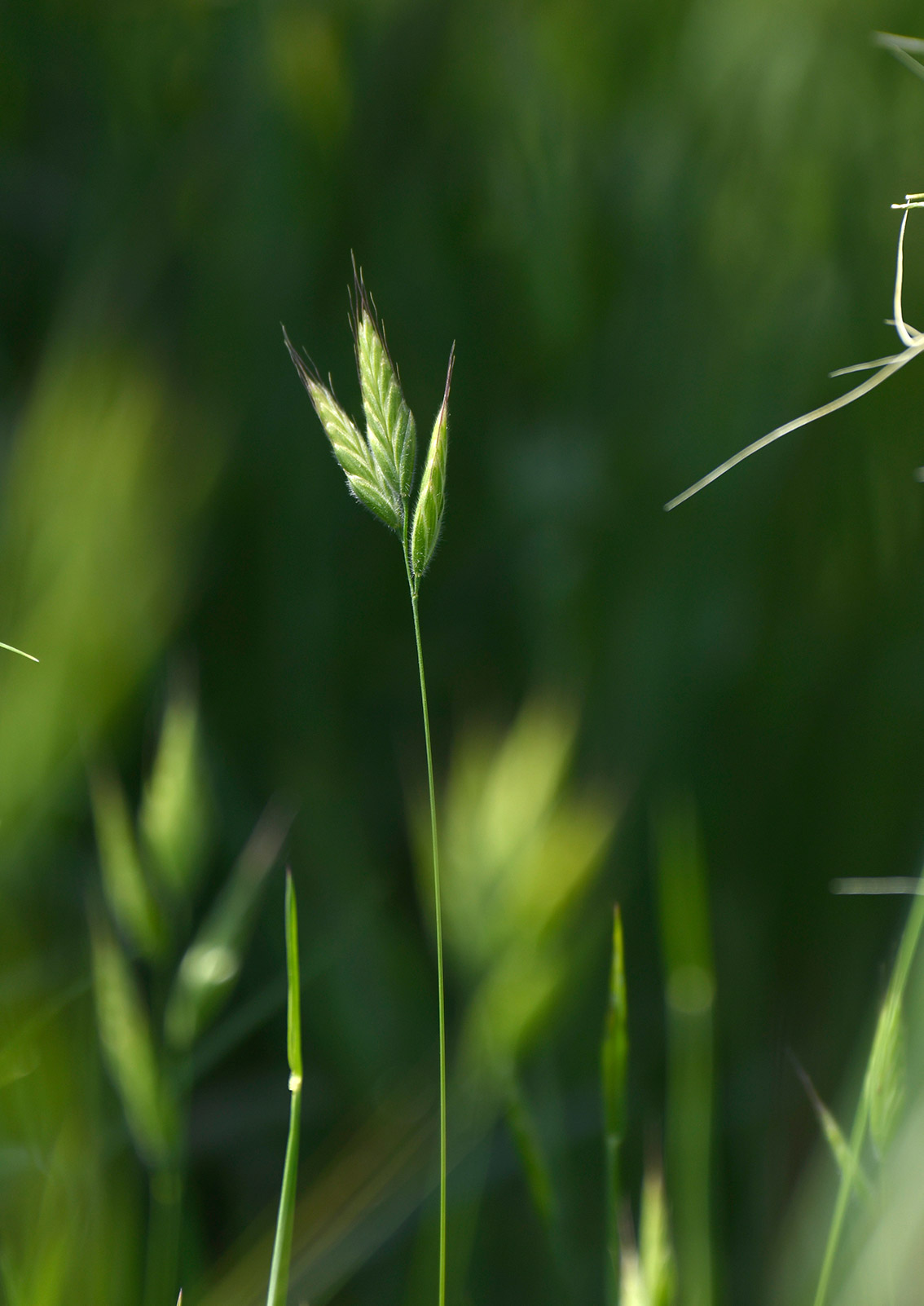
Between the drought years and fluctuating market prices, cattle ranchers must roll the dice every season. Heyden said that when a new technique can improve their soil and have carbon-absorbing benefits, she felt it was a matter of good stewardship to explore it. “Weather systems have changed dramatically, more and more every year,” she noted. “In this area, with compost, the land stays cooler and wetter,” producing more and better grasses.
Astonishing rates of increased carbon sequestration — 45-50 percent more carbon was pulled underground by the composted area than in the control area — were achieved by the Marin Carbon Project in an area that averages 24-32 inches of rain. The project came out of a ranch that turned into a weed jungle after new owners ended the cattle operation in the hope of creating a “natural” setting for their art studio. John Wick and his wife, author and illustrator Peggy Rathmann, asked rangeland expert Jeff Creque for help in 2008. Returning cattle to the land and some intensive herding were so successful that Wick and Creque plunged into the possibilities, enriching the land with compost to remove more carbon from the air. The Marin Carbon Project was born.
But will it work in Santa Barbara County?
Santa Barbara’s is a vastly more arid climate with often disappointing rainfall. The Chamberlin Ranch’s first-year result at the university test sites increased the forage by 16 percent — carbon absorption improved in equal portion — with 24 inches of rain. The compost used was brought down from Marin — which makes its own — for an apples-to-apples study, but whether Santa Barbara’s results will match Marin’s is an open question.
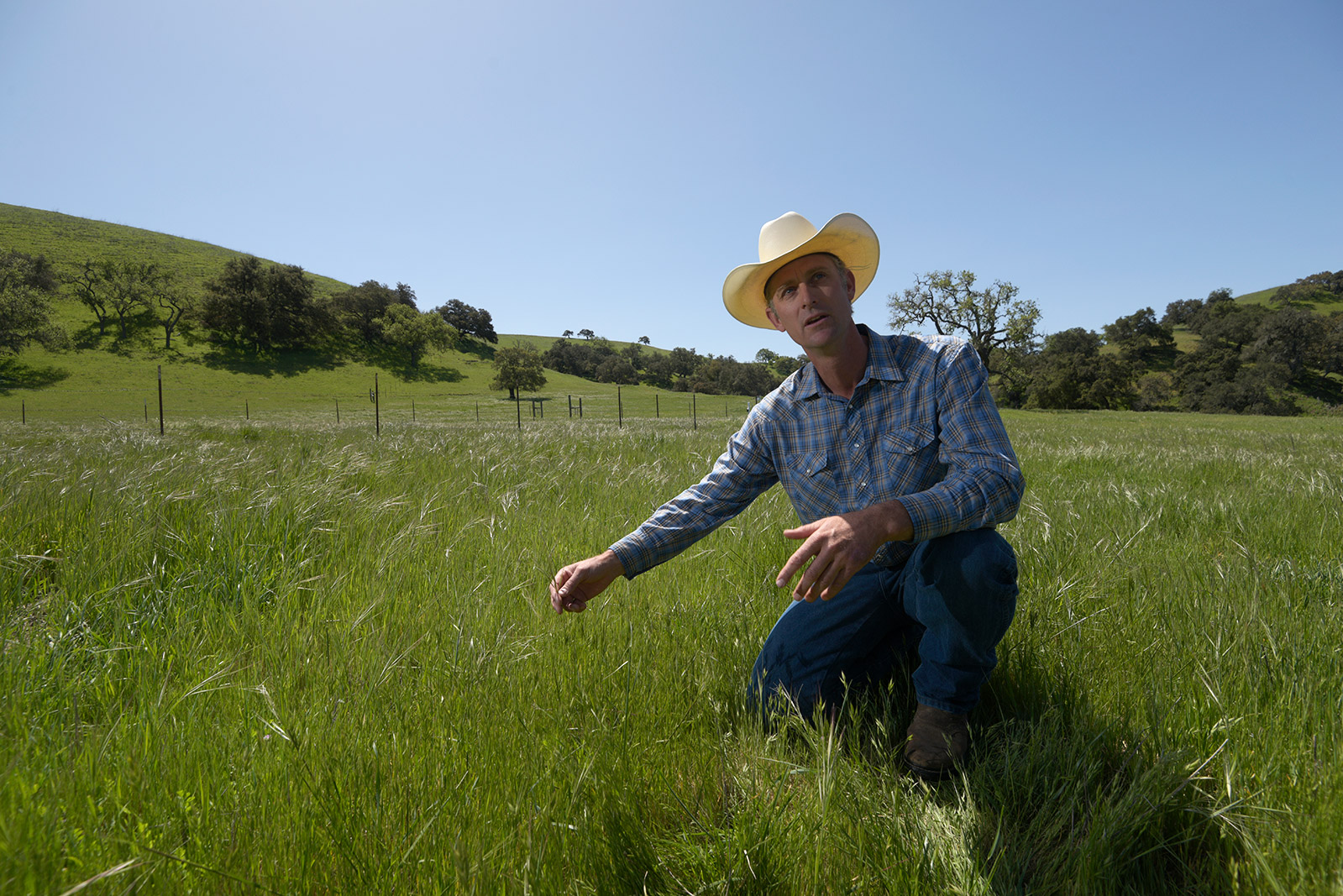
It currently takes 15-20 acres to support a cow grazing in Santa Barbara County, as opposed to eight acres in Marin. The Chamberlin Ranch’s carbon practices are just starting to be put in place — of the 34 possible protocols, it’s instituting about a dozen — so a comparison is difficult. A much larger test area, 60 acres, will be composted in November; compost is applied once every decade or so, Creque said. And they’re still working out smaller paddocks, larger herds, water supply, and quicker rotations through the pastures, Heyden and Chamberlin said.
Then there’s the availability of compost. To cover one acre in a quarter inch of topsoil takes about 34 cubic yards of material. The area’s certified compost maker, Engel & Gray in Santa Maria, is supplying the compost for the 60-acre study and makes about 100,000 cubic yards per year, Bob Engel said. Its permit allows four times that quantity.
The Tajiguas Landfill is another source of compost. The state requires landfills to divert much of its organic material in order to reduce greenhouse gases. To deal with that mandate, the county has been working on an anaerobic digester for the past 10 years to consume the organics and produce a megawatt of electricity with the resulting methane. But using that organic matter to create compost, Wright argued, “is a higher and better use” given what is now known about its role in burying carbon. “We’re not opposed to the digester,” she added quickly, although the cost has risen to more than $120 million and its funding is now on the county’s shoulders and not the private sector as originally envisioned. Compost would simply be a better use of what remains of the landfill’s lifetime, she said.

Out at a one-acre NRCS test site, the only sounds were the swallows calling as they flitted back and forth from nests in the oak trees to a reservoir in the distance. Chamberlin explained that the cows only remained in the pasture long enough to eat part, not all, of the tastier wild oats, filaree, and soft chess. “Grazing is critical for the process,” Chamberlin said. The cows’ chisel-like hooves trample down the grasses, forming a shady layer of protection for the soil surface. And leaving the herd in the pastures for shorter times means more grass is eaten less, leaving longer leaves of grass to be crushed down.
In the test plots fenced to keep cows out, the native purple needle grasses declined while the grazed plots flourished. “More native perennials with their deep roots come back,” Chamberlin emphasized in the grazed areas, pointing out the cuts to the grass made by cattle teeth. “More diversity and more summer grasses are all to the good for the soil. For the ranch and the cows, it extends the grass season.” This year’s 10-inch rains, however, have cut it by two months.
In Santa Barbara County, according to the CEC’s rough calculations, as much as 270,000 acres are both flat enough to bring in truckloads of compost and far enough from streams or wetlands to avoid compromising them. “If we set a goal to apply compost to 15 percent of that — or about 40,000 acres,” said Wright, “that would result in carbon sequestration at a level that basically offsets the greenhouse gas emissions from the ag sector countywide.”
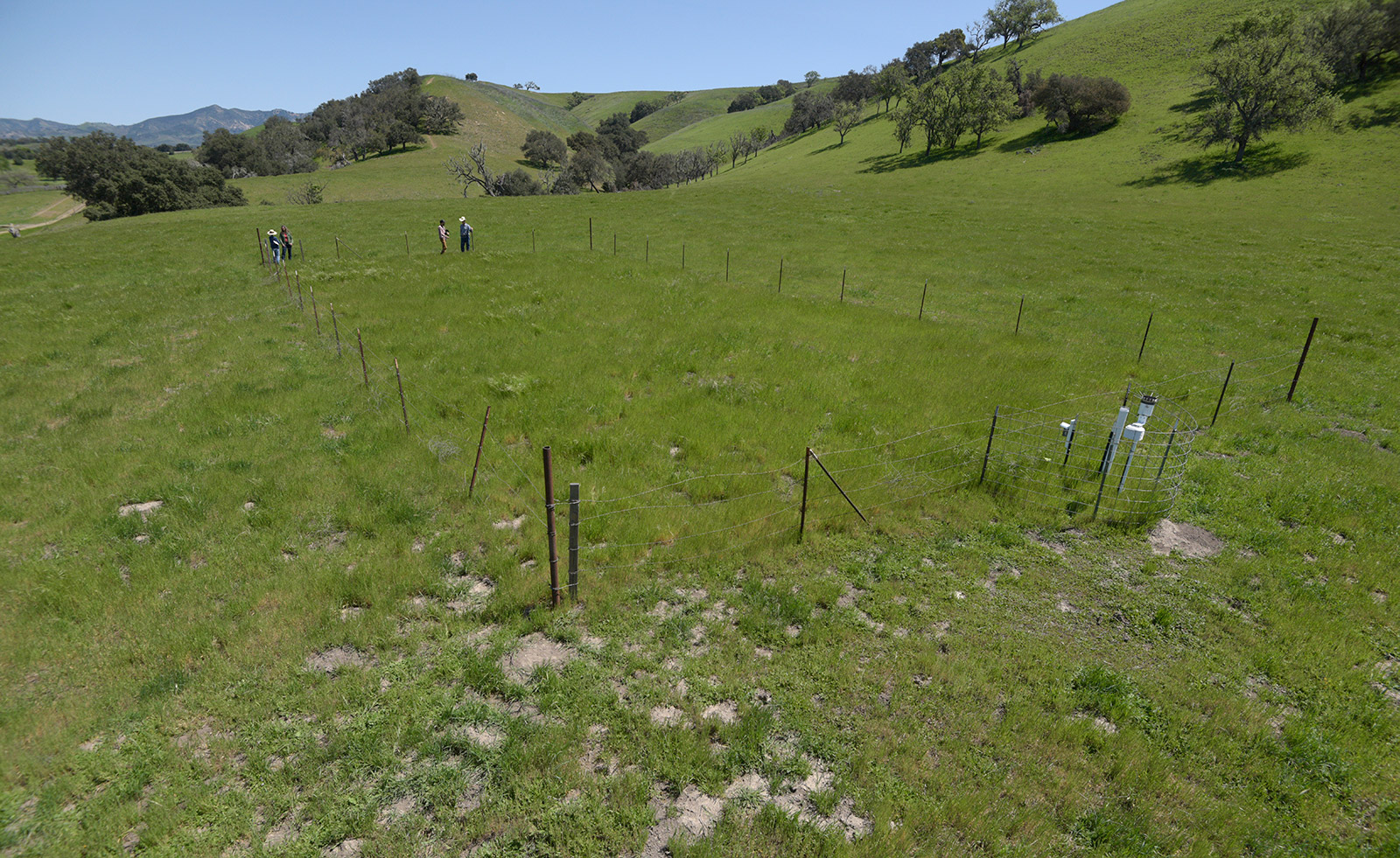
And if significantly more carbon were offset, there’s the California voluntary carbon exchange market — the smaller cousin of its cap-and-trade auction — not to mention offsetting the much-publicized methane from farting cows. The Marin project convinced the State of California in 2015 to include credits from carbon farmers in the voluntary carbon exchange program. About 900 pounds of extra carbon were stored per acre at Marin compared to control acres, in testing done by Whendee Silver, a geochemist at UC Berkeley. In comparison, driving from the Santa Barbara Independent in downtown Santa Barbara to visit the Chamberlin Ranch produced about 40 pounds of tailpipe carbon dioxide.
To compost large swaths of acreage, truckfuls are brought in, pumped through a tube, and layered about a quarter-inch thick. The Marin group demonstrated there was little difference in the result from a half-inch of compost and a quarter inch, Chamberlin said. Both amounts kickstarted the growth of more grass just about equally, as well as the photosynthesis that draws in carbon, and the smaller amount obviously is less costly.
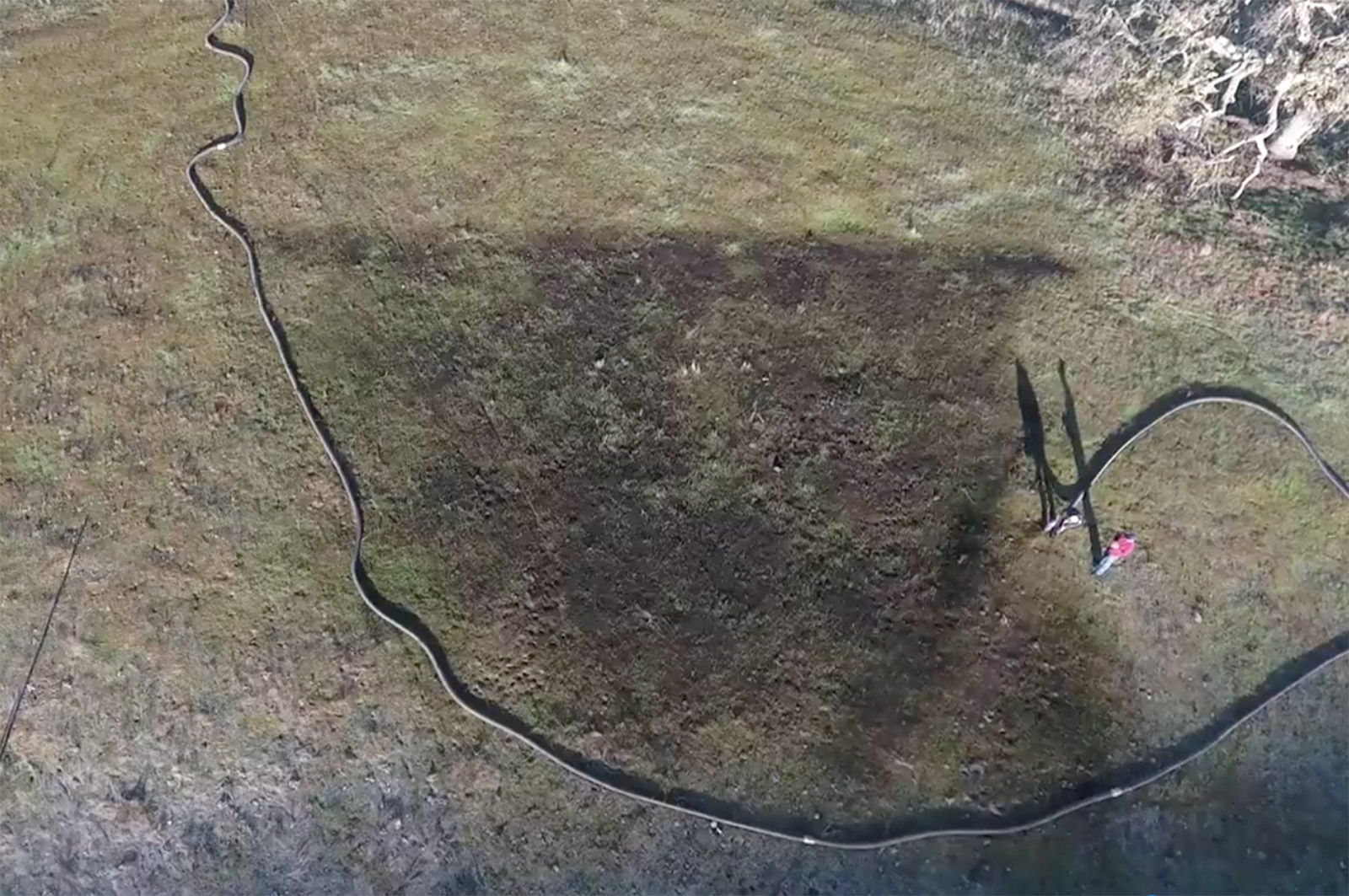
For the new 60-acre project, a good part of the $200,000 grant goes to buy compost, said Wright. The rest will go into organizing workshops. The contributions by university researchers, conservation agency staffers, the ranch, and Engel & Gray have been in-kind matches required by the grant. (The Healthy Soils initiative includes 21 projects ranging from reclaiming industrial sites for farm use with cover crops to investigating wood chip and nitrogen interaction in San Mateo County. Vineyards are involved, too — notably Tablas Creek in Paso Robles, which is looking at cover crops and grazing or mowing to keep weeds down, and J. Lohr, which is studying rates of compost application, soil health, and carbon sequestration — along with Charlotte Decote and Cristina Lazcano, who are soil scientists at Cal Poly.)
Digging with his fingers under the greenery last week and showing some remaining grains of compost and a mat of dead grasses from the year before, Chamberlin explained, “As you sequester more, one part of sequestered carbon holds nine parts of water. It greatly increases the water-holding capacity of the soils between rains. During storms, the water infiltration rate is quicker.” It’s an explanation Chamberlin provides fluently, having made it many times to curious neighbors and at demonstration workshops hosted at the ranch.
There’s a real science to creating compost. It’s not mulch, which is bigger and usually placed on top of soil to suppress weeds, retain moisture, or just look nicer than bare dirt. Compost, by contrast, is plant matter with nitrogen that has biodegraded with oxygen and high heat — so high the weed seeds and pathogens have been killed — and is rich in microbes that interact with plants in a complex cycle that benefits both plant and microbe.
In that first year of new growth, Wright brought several elected officials to the ranch to see what creating healthy soil was all about. “It was a beautiful day, and we took our shoes off and walked through the acre,” she recalled. “You could really tell the difference. The composted zones were cooler, softer, clearly holding more moisture. Once we were out of those zones, it was clearly harder, painful to walk on with bare feet!” If carbon ranching becomes Santa Barbara’s future, the grass could well be greener on this side of the fence.
